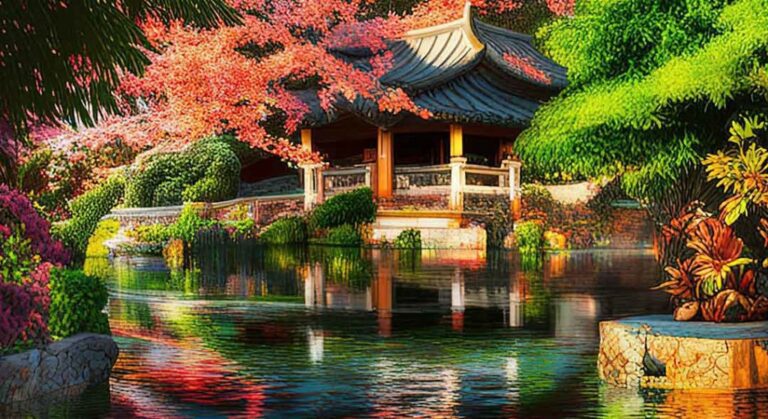Art Review: The Global Art Scene, 1850-1950

Table of Contents
Realism and its Global Impact (1850-1880)
The Rise of Realism in France: Courbet and Millet
Realism, a reaction against Romanticism's idealized portrayals, emerged in mid-19th century France. It championed the depiction of everyday life, often focusing on the working class and social issues. Key characteristics of Realism include:
- Focus on the ordinary: Realist artists depicted scenes of everyday life, avoiding idealized or romanticized representations.
- Social commentary: Many Realist works served as social critiques, highlighting poverty, inequality, and the harsh realities of life for the working class.
- Rejection of idealized forms: Realism prioritized accurate representation over idealized beauty or stylistic flourishes.
Gustave Courbet, a pivotal figure in the Realist movement, masterfully captured the lives of ordinary people. His masterpiece, "The Stone Breakers" (1849), exemplifies this focus on realistic depictions of labor. Jean-François Millet, known for his poignant portrayals of peasant life, further exemplified the movement's social consciousness in works like "The Gleaners" (1857). [Insert images of "The Stone Breakers" and "The Gleaners" here if possible].
Realism's Global Spread: Examples from other countries
The influence of Realism extended far beyond France's borders. Its emphasis on accurate observation and social commentary resonated with artists around the world, albeit with regional variations.
- Latin America: Realism found fertile ground in Latin America, reflecting the social and political realities of newly independent nations. Artists like José María Velasco in Mexico, known for his landscapes, adopted Realist principles.
- Russia: The "Peredvizhniki" (Wanderers) movement in Russia embraced Realism, employing art as a means of social critique and promoting national identity. Artists such as Ilya Repin are notable examples.
- Cross-cultural influences: While adhering to the fundamental principles of Realism, artists across the globe infused their work with local cultural nuances and contexts. This led to diverse interpretations of the style, resulting in a rich tapestry of Realist art across continents.
The Impressionist Revolution and its Legacy (1870-1900)
Key Characteristics of Impressionism: Light, Color, and Brushstrokes
Impressionism, emerging in France in the 1870s, revolutionized art with its emphasis on capturing fleeting moments and the effects of light. Key features of Impressionism include:
- Emphasis on light and color: Impressionist painters aimed to capture the ever-changing interplay of light and color in the natural world.
- Short, broken brushstrokes: Their distinctive style involved applying paint in short, visible brushstrokes, creating a shimmering effect.
- Open-air painting (plein air): Many Impressionists worked outdoors, directly observing and painting their subjects in natural light.
Claude Monet, with his iconic "Impression, soleil levant" (1872), gave the movement its name. Other leading Impressionists, such as Pierre-Auguste Renoir, Edgar Degas, and Camille Pissarro, each brought their unique perspective to the movement, focusing on different subjects and exploring various techniques within the Impressionist style.
The Spread of Impressionism and its Influence on Subsequent Movements
Impressionism's influence transcended geographical boundaries, inspiring artists worldwide and paving the way for subsequent artistic movements.
- Global adoption: Impressionist techniques and aesthetic sensibilities spread rapidly across Europe and beyond, influencing artists in various countries.
- Post-Impressionism: Artists like Vincent van Gogh, Paul Cézanne, and Paul Gauguin built upon Impressionism, but moved towards greater expressionism and personal interpretation.
- Fauvism and other movements: The vibrant use of color in Impressionism directly influenced the Fauves, while its focus on light and form found echoes in later movements.
Exploring Diverse Artistic Movements of the Late 19th and Early 20th Centuries
Post-Impressionism: Van Gogh, Cézanne, Gauguin, and Beyond
Post-Impressionism, while sharing some similarities with Impressionism, diverged significantly in its emphasis on subjective expression and personal interpretation. Each artist developed a unique approach:
- Vincent van Gogh: Known for his impasto technique and emotionally charged landscapes and portraits.
- Paul Cézanne: Sought to provide a more structured and geometrical foundation for painting, influencing Cubism.
- Paul Gauguin: Explored themes of primitivism and symbolism, often depicting exotic landscapes and figures.
These artists moved beyond the purely visual representation of Impressionism to explore more profound emotional and psychological depths.
The Rise of Modernism: Fauvism, Cubism, Expressionism, and Surrealism
The late 19th and early 20th centuries saw the rise of Modernism, encompassing a diverse array of movements that challenged traditional artistic norms:
- Fauvism (Henri Matisse): Characterized by bold, non-naturalistic colors and expressive brushwork.
- Cubism (Pablo Picasso, Georges Braque): Fragmented forms and perspectives, challenging traditional notions of representation.
- Expressionism (Wassily Kandinsky, Ernst Ludwig Kirchner): Emphasis on subjective emotion and the expression of inner feelings.
- Surrealism (Salvador Dalí, René Magritte): Exploration of the unconscious mind and dreamlike imagery.
Global Perspectives: Art from Asia, Africa, and Latin America
The global art scene between 1850 and 1950 extended beyond the dominant European movements.
- Asia: Significant artistic developments occurred in Japan, China, and India, with movements and styles influenced by both traditional forms and Western contact.
- Africa: Diverse artistic traditions continued to thrive, often incorporating colonial influences in unique ways.
- Latin America: Regional artistic styles evolved, reflecting the socio-political landscape and cultural heritage.
The Impact of World War I and its Aftermath on the Art World
The Rise of Dada and Surrealism as Reactions to War
World War I profoundly impacted the art world, giving rise to movements that reflected the disillusionment and trauma of the era.
- Dadaism (Marcel Duchamp, Hannah Höch): A rejection of reason and logic, often employing irony, absurdity, and anti-art sentiments.
- Surrealism: Further explored the unconscious mind as a means of escaping the harsh realities of war and societal constraints.
The Continuing Evolution of Modern Art
The interwar period witnessed a continuation of the Modernist trajectory, with art becoming increasingly diverse and experimental. Artistic styles continued to evolve, reflecting the changing social and political landscape.
Conclusion: A Retrospective on the Global Art Scene, 1850-1950
The period from 1850 to 1950 represents a pivotal moment in art history, marked by the rise and evolution of numerous groundbreaking movements. From the realistic depictions of everyday life to the radical innovations of Modernism, this era laid the foundation for contemporary art. Understanding this period is crucial to appreciating the complexities and richness of the artistic landscape we inhabit today. To deepen your understanding of the global art scene from 1850 to 1950, we encourage you to continue your exploration of 19th and 20th-century art through museum visits, further reading, or in-depth research into specific artists and movements that fascinate you. Discover more about this fascinating period in art history!

Featured Posts
-
 Kaj Vinner I Basel Svt Foerbereder Sig Foer Eurovision I Sverige
May 19, 2025
Kaj Vinner I Basel Svt Foerbereder Sig Foer Eurovision I Sverige
May 19, 2025 -
 Uber Mumbai Pet Travel Policy And Booking Guide
May 19, 2025
Uber Mumbai Pet Travel Policy And Booking Guide
May 19, 2025 -
 New Mexico Governor Race Deb Haalands Candidacy
May 19, 2025
New Mexico Governor Race Deb Haalands Candidacy
May 19, 2025 -
 Impact Of Income Tax Elimination On Hernando Mississippi
May 19, 2025
Impact Of Income Tax Elimination On Hernando Mississippi
May 19, 2025 -
 Qdas Alqyamt Fy Dyr Sydt Allwyzt Tqryr Alwkalt Alwtnyt Llielam
May 19, 2025
Qdas Alqyamt Fy Dyr Sydt Allwyzt Tqryr Alwkalt Alwtnyt Llielam
May 19, 2025
